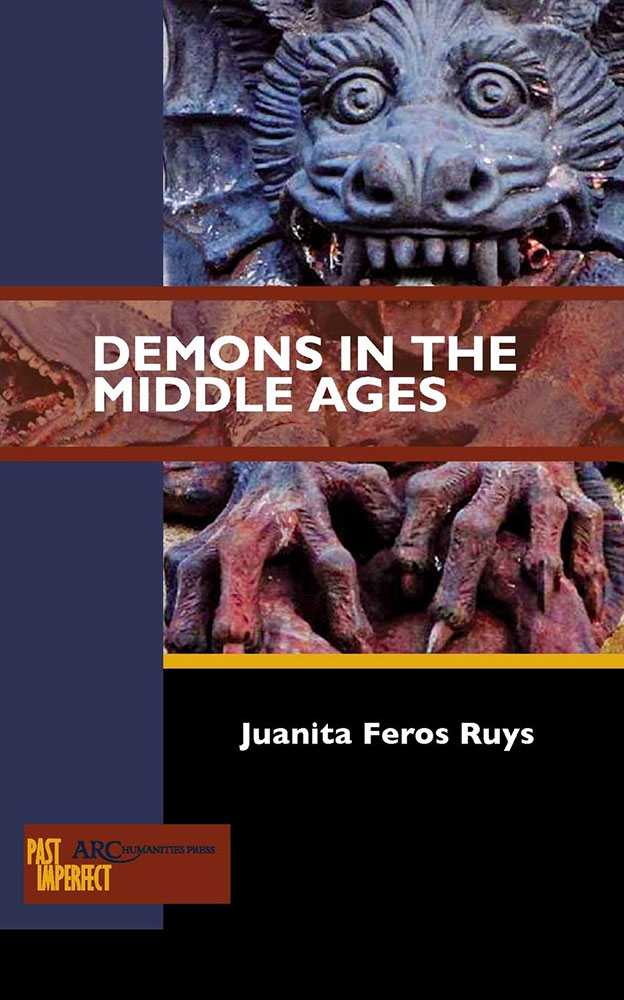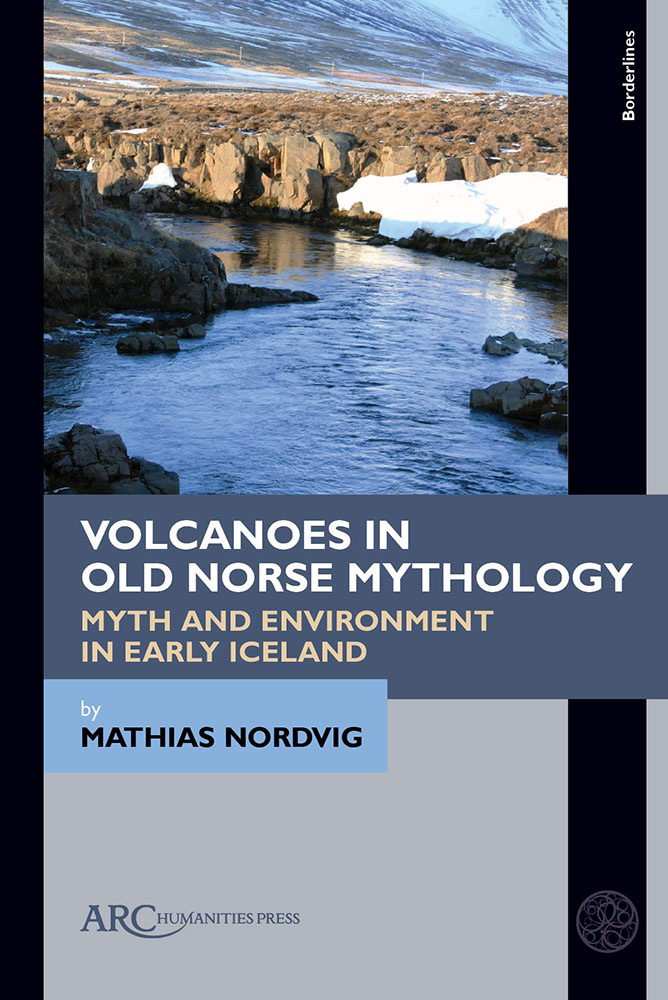 Demons in the Middle Ages is part of the Arc Humanities Press series Past Imperfect, which they describe as seeking to present concise critical overviews of the latest research by the world’s leading scholars. Concise is certainly what you get here from Dr Juanita Feros Ruys, with the page count, sans references and further reading, only running to a little over a svelte 100 pages.
Demons in the Middle Ages is part of the Arc Humanities Press series Past Imperfect, which they describe as seeking to present concise critical overviews of the latest research by the world’s leading scholars. Concise is certainly what you get here from Dr Juanita Feros Ruys, with the page count, sans references and further reading, only running to a little over a svelte 100 pages.
Ruys is a Senior Research Fellow and Associate Director of the Medieval and Early Modern Centre at the University of Sydney, Australia, but this is a work that doesn’t feel particularly academic, and instead fulfils the brief of being a concise overview, something of a lay primer. As a result, while there is a lot of detail contained herein, there is not much in the way of academic analysis, no theoretical models applied to the information, with largely a just-the-facts approach being pursued. That isn’t to say that Ruys is devoid of insight, and she notes particular through-lines that occur across the centuries in regards to the theological function of demons, drawing attention in particular to how their interaction with saints and monastics served different purposes depending on the period. She also employs a style that, while not overly detailed, provides context and background information that may be essential for the lay reader, but without any sense of talking down, over-simplifying or being patronising.
Ruys divides Demons in the Middle Ages into a mere four chapters, largely based on locations, respectively situating demons in the desert, the cloisters, the schoolroom, and finally, the wider world. The desert, as a site of profound alterity, provided a paradoxically fertile ground for the growth of ideas about demons. Deserts already had an association with the demonic, due to the environment’s harsh and remote nature, and it was these same austere qualities that attracted the monks who travelled there to use this isolation as an aid to their spiritual growth. Here, though, the existing associations with the demonic were affirmed by the monks themselves, who were subjected to attacks from the indigenous metaphysical inhabitants. Demons impinging on the spiritual pursuits of monks became an almost de rigueur factor in the biographies of such future saints, and Ruys shows how this related to the idea of acedia, the emotional state of spiritual listlessness that monks in their isolation were often susceptible to. The spirit of acedia was ‘the noonday demon,’ and was described by the late fourth century Evagrius of Pontus, as the most troublesome of all of the eight genera of evil thoughts.
In chapter two, Ruys documents how demons, along with monasticism itself, moved from a harsh eremophilous environment to the more temperate climes of Western Europe, where eremitic privations were replaced by the slightly more hospitable cloister. Without the harsh conditions that had made spiritual combat in the desert so tangible, the demons found a new home within the very walls of European monasteries, the conflict becoming less physical and more metaphysical. Demonic attack was a constant concern, and because it was believed that the Devil would target site in which Christian truth and purity was at its strongest, the ardour and righteousness of an order or monastery could be inferred from the amount and ferocity of assaults that they suffered. In this section, Ruys therefore draws on material from two monks in particular, the Benedictine Peter the Venerable and the Cistercian Herbert of Clairvaux, both of whom collected a variety of accounts of demonic activity, representing an exponential growth in the conception of demons and their interaction with humanity. Ruys expertly notes this evolution of ideas, documenting how new concepts were introduced by various scholars, such as the twelfth century French monk Guibert of Nogent and the thirteenth century Cistercian Caesarius of Heisterbach. Guibert’s accounts place terrifying tales alongside farcical ones, such as the story of the pious priest accosted one night by a crowd of demons who appeared as Scotsmen, and, living up to the very worst of Hibernian stereotypes, demanded money from him. In addition to slanderous allegations against Scottish demons, Guibert asserted that demons could love women and seek to have intercourse with them, a reversal of the idea popular in desert eremitism, where demons appeared as lustful female spirits in order to distract monks with lustful thoughts, but did not seek to directly copulate with them. Caesarius underscores how demons were still associated with acedia, despite the relocation from the desert to the monastery, with the pious always being susceptible to the Devil inflaming their hearts with doubt, leading to melancholy, ennui and sickness.
Ruys moves from the cloister to the classroom in the third chapter, using the quaestiones compiled by Thomas Aquinas in his Summa theologiae as examples of the discussions common amongst medieval thinkers as to the nature of creatures like demons and angels. The focus here is largely on the value of demons and angels to the speculation, theories and thought experiments of scholars, with the ambiguous natures of both spirits making them worthy subjects for epistemological ruminations. Aquinas, naturally looms large in this chapter, casting an inevitable shadow down through the years, but Ruys also draws on works from the likes of Anselm of Canterbury, Bartholomeus Anglicus, and most notably, William of Auvergne, whose focus of the sexual interaction betwixt human and demon, segue into the next chapter.
In this, the final chapter, Ruys enters the world beyond the ecumenical and educational, considering how demons were treated amongst lay people, and in particular in so-called learned magic and the narratives of witchcraft. This is a whirlwind conclusion to the book at a mere seventeen pages, with the end coming far sooner than expected, just as things are getting interesting. It is largely a broad discussion of how the idea of magic as exclusively demonic cemented over time, beginning when the Early Church Fathers established a Christian orthodoxy amongst the milieu of competing traditions of Jewish belief and various pagan schools of philosophy. This had an antecedent in the apocryphal Jewish Book of Enoch, in which the fallen angel Azazel taught the secrets of witchcraft and magic to humans, as well as the arts of metalwork and makeup. Ruys documents how this intersection of magic and science also occurred in the medieval period, where the proto-science of alchemy, informed by ideas of forbidden knowledge introduced anew by a twelfth and thirteenth century influx of Jewish, Arabic and Greek learning, eventually lead to the grimoire tradition. Unfortunately, this is just a preamble that doesn’t go into much depth about learned magic following this. This is, something that then also occurs with the slightest of references to witchcraft’s relationship to demons, with the Malleus Maleficarum being introduced a mere three and a half pages before everything wraps up.
In all, Demons in the Middle Ages is a nice little potted history that does what it was intended to do at a brisk pace. Ruys has an enjoyable author’s voice that moves this pace along, but does make one pine for more of it.
Published by Arc Humanities Press
